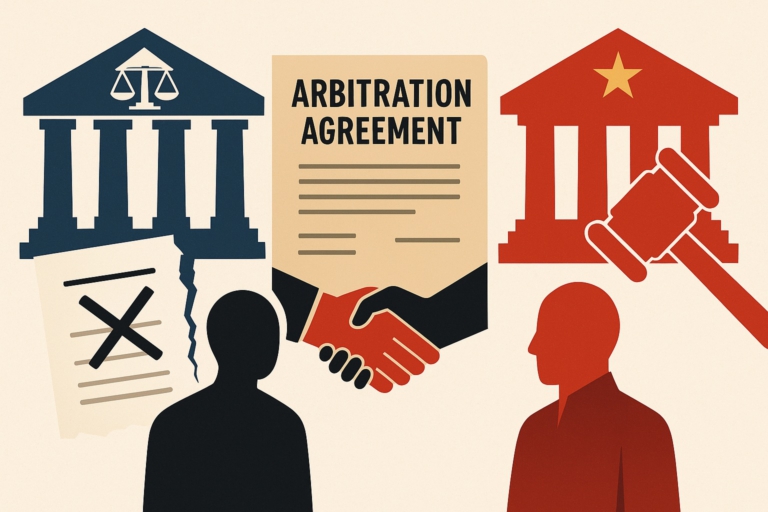
“The burden of proof lies with the party asserting a proposition” (谁主张,谁举证) is a primary rule of burden of proof in China’s judicial proceedings. Only under exceptional circumstances can the parties request the court to assist in obtaining evidence or the other party to present evidence. The burden of proof is not unchangeable, which can shift from one party to the other during the trial. The judge has some discretion on the distribution of the burden of proof.
I. What is the burden of proof
If a fact to be proved is found untenable by the court on the grounds of insufficient evidence, such an adverse consequence is called the burden of proof. Therefore, the distribution rule of the burden of proof is to determine which party should prove the fact in dispute.
II. Core of the rule: The burden of proof lies with the party asserting a proposition
“The burden of proof lies with the party asserting a proposition” is not only a summary of Article 64 (“The party who holds the affirmative is obliged to prove it.”) of China’s Civil Procedure Law (CPL), but also the core of the burden of proof. For example, in a tort case where the plaintiff claims that the defendant’s act constitutes an infringement, while the defendant claims that there are reasons for liability exemption/reduction, the plaintiff needs to present evidence on tort, damage consequence, causality, and the defendant’s fault, while the defendant needs to present evidence on the existence of the reason for liability exemption/reduction.
Based on this rule, the first obligor of evidence presentation is always the parties themselves, and the parties should try their best to obtain the evidence. Only when the parties are unable to obtain evidence for objective reasons, can they request the court to assist in the investigation and collection of evidence, take evidence preservation measures, or order the other party to present evidence (for the court’s investigation and collection of evidence, see our earlier post for details; for the evidence preservation, see another earlier post for details; for the evidence presentation order, see another earlier post ).
In addition, "the burden of proof lies with the party asserting a proposition” means that the parties generally only need to present evidence for the facts they claim, rather than all the facts involved in the case. Meanwhile, the parties may select evidence for presentation at their discretion. Choosing appropriate evidence is the key to winning a case, and the parties often need experienced lawyers in formulating strategies therefor.
III. The reversal of the burden of proof
In some cases, there is a big gap between the two sides in terms of legal knowledge and the ability of evidence presentation, and therefore the law needs to favor the weaker side. In addition, for some special facts to be proved, it is often difficult for the claimant to present evidence. Under such circumstances, the regular rule of presenting evidence is no longer applicable, and the burden of proof will be borne by the opposing party. The common cases of reversal of the burden of proof in practice are as follows:
(1) In the case of employment dispute arising from the employer’s decision to rescind the employment contract, reduce the remuneration, and calculate the employee’s seniority, it should be the employer proving the lawfulness of its behavior, rather than the employee proving the unlawfulness of the employer’s behavior. [1]
(2) In the case of patent infringement of the new product manufacturing method, it should be the alleged infringer proving the difference, rather than the patentee proving the consistency between the product manufacturing methods. [2]
(3) In the case of personal injury caused by objects falling from buildings, structures or other facilities, it should be the owner, the manager, or the user of the above-mentioned objects proving their innocence, rather than the injured party proving the fault of such persons. [3]
(4) In the case of environmental pollution, it should be the polluter proving the non-existence of causality between his behavior and environmental damage, rather than the injured party proving the causality thereof. [4]
In addition, when the evidence is controlled by the other party, the party asserting the affirmative may apply to the court to require the other party to disclose the relevant evidence (for the evidence presentation order, see our earlier post for details). From the jurisprudence perspective, it is still controversial to categorize this rule as the reversal of the burden of proof; however, we believe that it does produce the effect that the reversal of the burden of proof possesses.
IV. The shift in the burden of proof
After the party asserting the affirmative assumes the burden of proof, if the judge thinks that the evidence is sufficient, then the burden of proof will shift to the opposing party. In other words, the respondent shall present rebuttal evidence to sway the judge’s inner judgment, otherwise, it shall bear the adverse consequences. Therefore, whether the burden of proof is transferred or not depends entirely on the judge. However, the judge generally will not disclose his/her judgment, which may have changed a few times as the court proceedings go. Therefore, the transfer of the burden of proof is often not obvious. The parties can only tell from the judge’s questions. Needless to say, hiring experienced lawyers is very necessary.
[1]《最高人民法院关于审理劳动争议案件适用法律若干问题的解释一》第十三条:因用人单位作出的开除、除名、辞退、解除劳动合同、减少劳动报酬、计算劳动者工作年限等决定而发生的劳动争议,用人单位负举证责任。
[2]《专利法》第六十一条:专利侵权纠纷涉及新产品制造方法的发明专利的,制造同样产品的单位或者个人应当提供其产品制造方法不同于专利方法的证明。
[3]《侵权责任法》第八十五条:建筑物、构筑物或者其他设施及其搁置物、悬挂物发生脱落、坠落造成他人损害,所有人、管理人或者使用人不能证明自己没有过错的,应当承担侵权责任。所有人、管理人或者使用人赔偿后,有其他责任人的,有权向其他责任人追偿。
[4]《侵权责任法》第六十六条:因污染环境发生纠纷,污染者应当就法律规定的不承担责任或者减轻责任的情形及其行为与损害之间不存在因果关系承担举证责任。
Photo by Mick Haupt (https://unsplash.com/@rocinante_11) on Unsplash
Contributors: Chenyang Zhang 张辰扬 , Ran Ren 任冉







